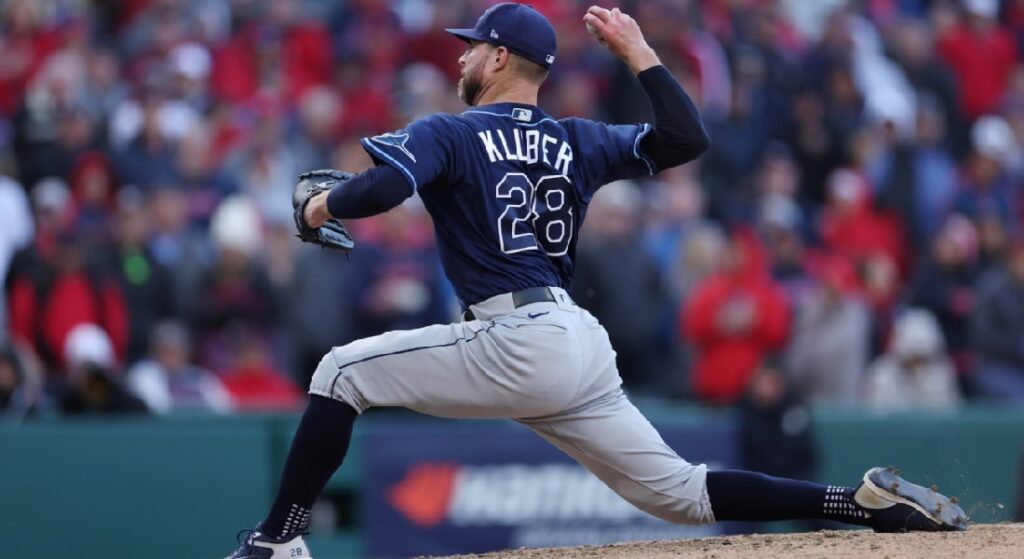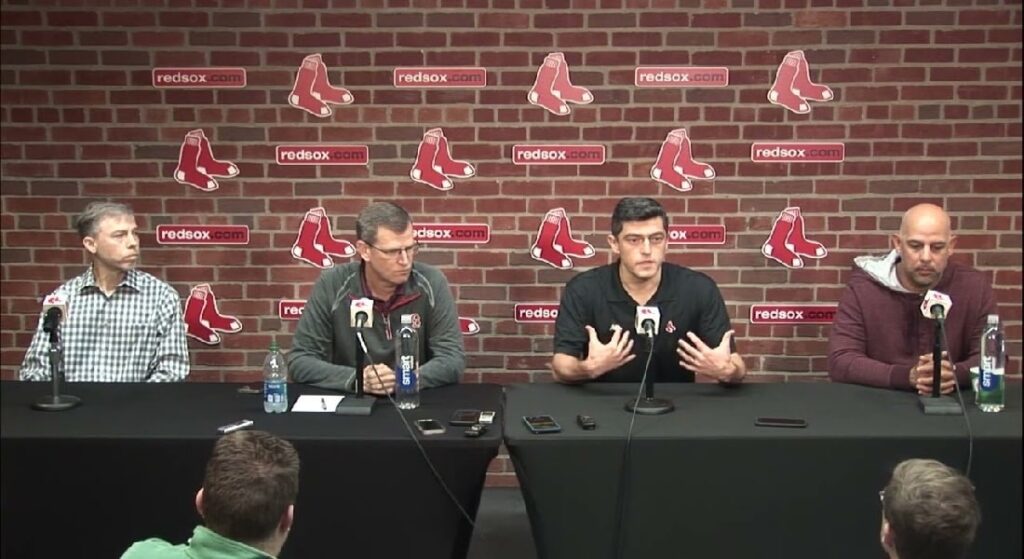The Red Sox got a starter, signing Corey Kluber, a valuable if not particularly impactful mid-rotation arm, to a one-year deal with a club option for 2024, further deepening their rotation depth.
Kluber’s salary will be $10 million next season, and the option is worth $11 million. The deal can max out at $27 million if he makes 30 starts in both 2023 and 2024.
After Nathan Eovaldi signed with the Rangers, the Sox had to get their man this time.
Kluber was the only decent free-agent starter left on the market after they missed out on pitchers they wanted (Zach Eflin, Andrew Heaney, Noah Syndergaard). Nobody the Sox wanted except Eovaldi would’ve moved the needle. They weren’t in on the top of the market (Justin Verlander, Chris Bassitt, Jacob deGrom), but Carlos Rodon, an injury-prone lefty, a la Chris Sale and James Paxton, also wasn’t the best fit.
This year’s free agent starter class was thin, granted.
While adding more pitching depth was essential, the Red Sox are still missing a top-of-the-rotation starter. That happens, and the narrative changes quickly. The narrative desperately needs changing.
If and until Boston gets that arm, it’s a high upside/low floor rotation with more depth than 2022.
However, with depth also comes flexibility.
Corey Kluber Adds to Red Sox Rotation Depth

The 2023 Red Sox rotation might have more depth than in 2022, but even with Corey Kluber, it’s not a better rotation. Yet.
Sale is the Ace if healthy. Say he is; what can we reasonably expect from him after making only 11 starts since the beginning of 2021?
It’s a similar situation with Paxton. He’s all but healthy now, but he’s made only six starts since the end of 2019.
Nick Pivetta will post and provide innings, though the quality of those innings is inconsistent.
Garrett Whitlock and Brayan Bello have all the potential in the world and, of anyone, are the likeliest to develop into top-of-the-rotation arms. Whitlock was near dominant his first few starts until the hip injury popped up. Bello only got better with time, despite some bad luck behind him (very high .371 batting average on balls in play).
The Sox tried Kutter Crawford in the bullpen to start 2022, and it did not work. He was sent down, came back as a starter, and was a different pitcher. He should be in a long relief role and the first option to start when something happens. But he may begin 2023 at Triple-A in the rotation.
Tanner Houck is being stretched out as a starter, but having him in one-two inning spurts is too enticing. His stuff works out of the bullpen, and he took to the role, even saving eight of nine games. Why mess with that?
And newcomer Corey Kluber makes it eight guys for five, maybe six, rotation spots. At this stage, he’s a valuable, though not particularly impactful, mid-rotation arm. He gives the Red Sox something to work with, at least.
(The minor league depth on the 40-man roster boasts intriguing young arms in Bryan Mata, Chris Murphy and Brandon Walter, and guys that didn’t impress with Boston last season in Josh Winckowski and Connor Seabold.)
A Mid-Rotation Arm That Fits Sox’ New Philosophy

The Red Sox pursued Corey Kluber, who lives in Winchester, MA, last offseason before he signed with the Rays.
With Tampa Bay, the soon-to-be 37-year-old made 30 starts pitching 164 innings, walking only 21 and striking out 139 with a 4.34 ERA/4.00 xERA/3.57 FIP.
Kluber averaged 5.3 innings per start, pitching into the sixth inning in 21 of his 30 starts. He pitched at least five innings in 25 starts and six or more innings in 17 of those 25.
He allowed three runs or less in 21 starts.
The Birmingham, AL, native did not throw more than 93 pitches in any start.
The swing-and-miss stuff Kluber used to have wasn’t there and may be gone for good.
Kluber ranked in the 34th percentile in whiff rate and 31st in strikeout rate, and batters hit .274/.304/.425/.729 against him with a 77.6 percent contact rate.
Kluber, like Pivetta, was terrible against the A.L. East last season, with an ERA in the fives against the division.
His fastball, which hadn’t averaged more than 91 mph since 2016, averaged only 87.5 mph last year.
The Red Sox probably liked that Corey Kluber showed he could still limit walks, limit hard hits (75th percentile), and get chases (96th percentile) — things he has always done well.
Kluber’s skillset fits with the Kenley Jansen, Chris Martin, and Joely Rodriguez additions. All either limit walks, strike people out at a high clip, or both.
(Not to mention his age: Kluber, Martin, Jansen, and Justin Turner are all in their mid-to-late 30s.)
Corey Kluber Signing: With Depth Comes Flexibility

You can hate Chaim Bloom, whatever; It’s your business. But he didn’t lie about pitching depth.
Because the farm system isn’t elite yet, the Red Sox can trade from their MLB starter depth to potentially limit the prospects they’d have to give up in a deal.
Having so much starting pitching depth also means more length from the bullpen, which would be huge for this team, not just the rotation. Then the objective becomes getting the starters through five innings and scoring just enough runs for the back end to hold the lead.
If Boston can do that more often than not, we are looking at a truly competitive team.
That’s the kicker, isn’t it, though?
As is, It’s not a sure thing any starter can get through five with the game still in hand. It’s not a sure thing, either, that the offense will score enough to do that.
If the Red Sox can get an up-the-middle player with some offensive ability and a top starter, we’re looking at a playoff contender.
A six-man rotation or a piggyback situation isn’t out of the question, either, to try to manage everyone’s workload.
Options, options, options.
With the signing of Corey Kluber, the Red Sox’ 2023 payroll is approximately $216 million, $16 million below the $233 million lowest competitive balance tax threshold. That’s more than enough to get what they need to round out this roster.
For daily Red Sox coverage, follow me on Twitter. For more MLB coverage, follow @BellyUpBaseball and check out Belly Up Sport’s other MLB content.






